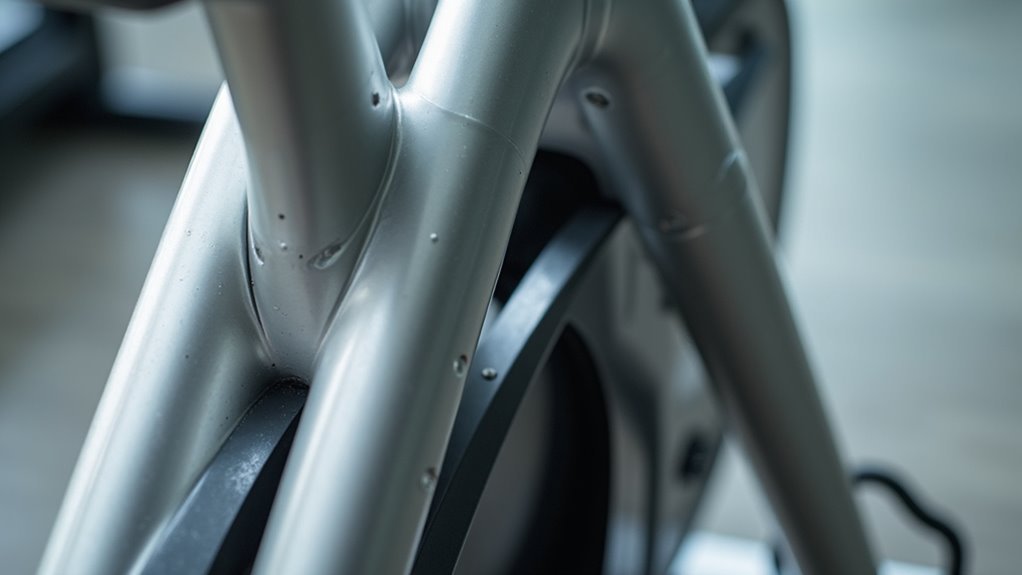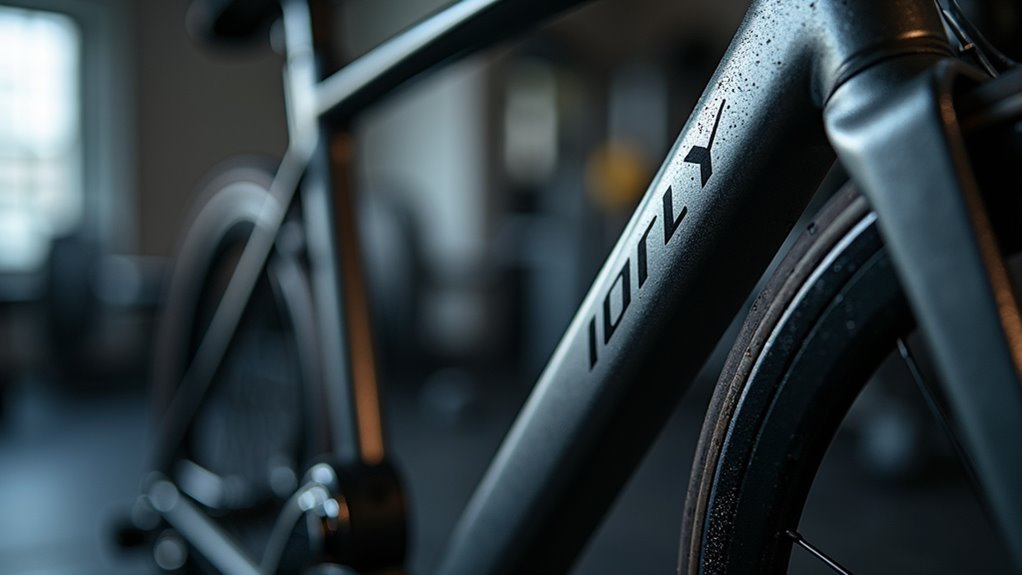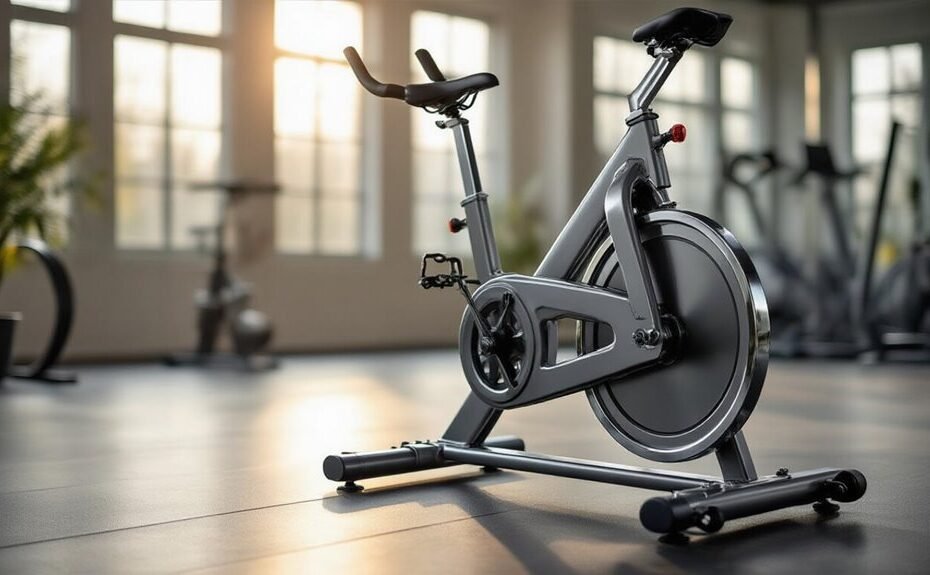Exercise bikes endure significant stress over their lifespan, making steel alloy selection critical for durability and performance. Manufacturers often cut corners on frame materials, which explains why some bikes wobble after just months of use. The difference between a bike that lasts three years versus fifteen often comes down to the specific steel composition. Most consumers don’t realize that the type of steel matters more than the weight rating. Let’s examine which alloys actually deliver on their promises.
Chromoly Steel: The Gold Standard for Exercise Bike Frames
When it comes to creating exercise bikes that withstand years of intense workouts, chromoly steel stands as the undisputed gold standard in the industry.
This remarkable alloy, blending chromium and molybdenum, delivers exceptional tensile strength of up to 93,200 psi while maintaining a lightweight profile.
Manufacturers value chromoly for its outstanding structural integrity and cost-effective machinability.
Exercise bike frames constructed from this material benefit from superior corrosion resistance, thanks to its chromium content, making high-performance bikes both durable and long-lasting.
With impressive fatigue resistance against repeated stress, it’s no wonder chromoly has become the preferred choice for quality exercise equipment.
Heat-Treated Carbon Steel Alloys for Maximum Durability
Beyond traditional steel options, heat-treated carbon steel alloys have emerged as powerhouses in the exercise bike manufacturing industry.
These exceptional materials offer ultimate tensile strengths reaching 1400 MPa, ensuring extraordinary durability during intense workouts. Reynolds 853, with its unique air-hardening properties, actually strengthens after welding—quite remarkable for maintaining structural integrity through countless stress cycles.
- Niobium and vanadium additions enhance performance characteristics while maintaining lightweight properties
- Chromium-molybdenum content provides superior corrosion resistance in varying environments
- Heat treatment processes greatly improve fatigue resistance—crucial for exercise bikes
- These frames can withstand years of intense training without compromising safety or feel
High-Tensile Steel: Balancing Strength and Cost

High-tensile steel stands as the perfect middle ground in the exercise bike industry, offering impressive strength characteristics without the premium price tag.
This robust choice supports up to 300 pounds, making it ideal for a wide range of users while demonstrating excellent durability against daily wear and tear.
What’s particularly appealing about high-tensile steel is its cost-effective nature compared to materials like chromoly or titanium—perfect for budget-conscious consumers.
It combines strength with the malleability and ductility of low carbon steel, which simplifies manufacturing processes.
With its powder-coat finish protecting against sweat damage and stable performance supporting heavy flywheels, it’s no wonder this material remains popular.
Stainless Steel Alloys for Sweat Resistance and Longevity
Stainless steel alloys represent the gold standard for exercise bike components exposed to moisture and sweat.
With a minimum chromium content of 10.5%, these steel alloys deliver exceptional rust resistance in high-moisture workout environments. Their durability and high corrosion resistance guarantee that exercise bikes maintain their aesthetics without developing unsightly rust stains over time.
- Requires minimal maintenance compared to other materials—just wipe down after intense sessions
- Withstands repeated stress from vigorous workouts, perfect for heavy daily use
- Extends the longevity of critical components like cables, fasteners, and frames
- Maintains a premium appearance despite constant exposure to sweat and cleaning products
Advanced Manganese-Molybdenum Steel Compositions

Modern exercise bikes face constant physical stress, demanding materials that endure thousands of hours of intense usage.
Advanced manganese-molybdenum steel has emerged as an exceptional material for high-performance bike frames, offering impressive tensile strengths comparable to chromoly steel.
What makes these steel alloys particularly valuable is their natural damping properties, which notably reduce vibrations and improve ride quality during workouts.
The manganese content enhances toughness and wear resistance, while molybdenum improves hardness—even under high temperatures from rigorous exercise conditions.
For manufacturers seeking the perfect balance of strength and fatigue resistance, these compositions deliver exceptional durability that serious cyclists require for their daily training regimens.
Frequently Asked Questions
What Is the Strongest Steel Alloy?
Heat-treated carbon steel alloys represent the strongest steel, achieving tensile strength up to 1400 MPa through specific alloy composition and manufacturing processes, while offering superior fatigue resistance for demanding applications.
What Is the Best Alloy for Durability?
Heat-treated chromoly steel offers ideal durability through balanced alloy composition, superior tensile strength, good corrosion resistance, favorable weight considerations, high fatigue limit, and cost efficiency despite moderate maintenance requirements during manufacturing processes.
What Is the Longest Lasting Bike Frame Material?
Titanium bikes offer the longest frame lifespan, outperforming aluminum frames and carbon fiber with superior rust resistance, ideal frame geometry, and minimal maintenance requirements despite higher cost. Many include lifetime warranties justifying the investment.
Is Chromoly Better Than Steel?
Chromoly is a steel alloy offering superior fatigue strength, corrosion resistance, and weight considerations compared to standard steel. Its performance differences justify higher costs for users prioritizing durability in bike frame materials.
